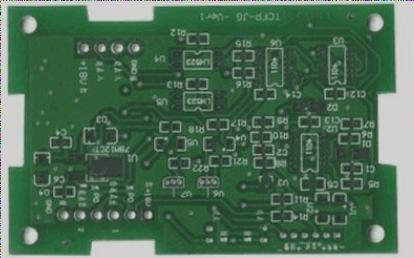The Importance of Battery Protection in Consumer Applications
Batteries are crucial for powering various devices in our daily lives, from electric vehicles to home appliances. However, ensuring the longevity of batteries is a common challenge faced by users. Battery failure, often caused by factors like voltage fluctuations and extreme temperatures, can lead to a decrease in performance and potential safety hazards.
One effective way to prevent battery failures is through cell protection mechanisms. These systems monitor and control battery cells to maintain safe operating conditions, safeguarding users from potential risks. Different types of batteries, such as lithium-ion batteries, require specialized protection circuits to manage voltage, temperature, and current levels.
Key Issues Addressed by Battery Cell Protection
- Preventing excessive charging or discharging currents
- Avoiding battery cell short circuits
- Protecting against overcharging or overvoltage situations
- Preventing under-voltage or over-discharging of batteries
- Managing extreme ambient temperatures
- Controlling internal pressure buildup
- Avoiding overheating
- Preventing battery abuse or mishandling
Cell protection mechanisms ensure that batteries operate within safe limits, as illustrated in the diagram below:
Red zone: Indicates dangerous operation areas that can permanently damage cells.
The green zone represents the safe operating range for batteries, while the white area acts as a design safety margin.

Figure 1: Cell Protection, Courtesy of Simon Mugo
Multiple protection schemes are in place to ensure battery safety, offering backup measures against overcurrent and overtemperature issues.
Enhancing Battery Protection with Advanced Technologies
Modern battery protection circuits incorporate innovative features to enhance safety and performance:
Thermal Fuse
Thermal fuses disconnect batteries at high temperatures, preventing cell damage.
Thermistor
Thermistors regulate temperature changes and can interrupt charging processes when necessary.
Resettable Fuse
Resettable fuses protect against overcurrent and overvoltage, automatically resetting after fault conditions are resolved.
Electronic Protection
Battery Protection Mechanisms and Intelligent Battery Management
Overview
Ensuring the safety and longevity of batteries is crucial for optimal performance. Various protection mechanisms are employed to safeguard batteries from overcurrent, short circuits, overcharging, and other potential risks.
Current-Sensing Devices
Current-sensing devices play a vital role in protecting batteries from overcurrent situations. These devices monitor voltage and resistance in the current path and trigger a switch to interrupt the flow when the current exceeds safe limits.
Intelligent Battery Systems
Intelligent batteries utilize advanced communication systems to enhance interaction with chargers. This sophisticated charging system enables efficient battery management, ensuring peak performance and longevity.
Battery Monitoring and Management
Intelligent battery systems not only transmit signals to chargers but also provide real-time notifications and activate warning lights to keep users informed about the battery’s condition. The Battery Management System (BMS) oversees these monitoring functions.
Enhanced Protection with Circuit Interrupt Devices
Circuit interrupt devices are crucial for managing cell pressure in smaller batteries. These devices contain switches that halt current flow if cell pressure exceeds safe levels, preventing potential damage.
Advanced Protection Features
The Pressure, Temperature, and Current Switch is a sophisticated protection device that detects current surges and intervenes if abnormal pressure or temperature levels are detected. Unlike traditional disconnect devices, this switch resets itself after activation, making it ideal for small cylindrical cells like the 18650 type.
System Isolation for Safety
System isolation is essential in scenarios where batteries need to be shielded from external faults. For instance, in the automotive industry, an inertia switch can isolate the battery in case of accidents. This external switch in the current pathway disconnects the circuit upon receiving an external signal.
Key Points
- Effective battery protection is critical for extending lifespan and ensuring reliability.
- Protection mechanisms address issues such as overcurrent, short circuits, overcharging, and extreme temperatures.
- Technologies like thermal fuses, thermistors, and resettable fuses offer additional layers of protection.
- Intelligent batteries facilitate smart communication for optimal performance.
- Circuit interrupt devices help manage cell pressure to prevent damage.
If you require further information or assistance, feel free to reach out to us at info@wellcircuits.com.


